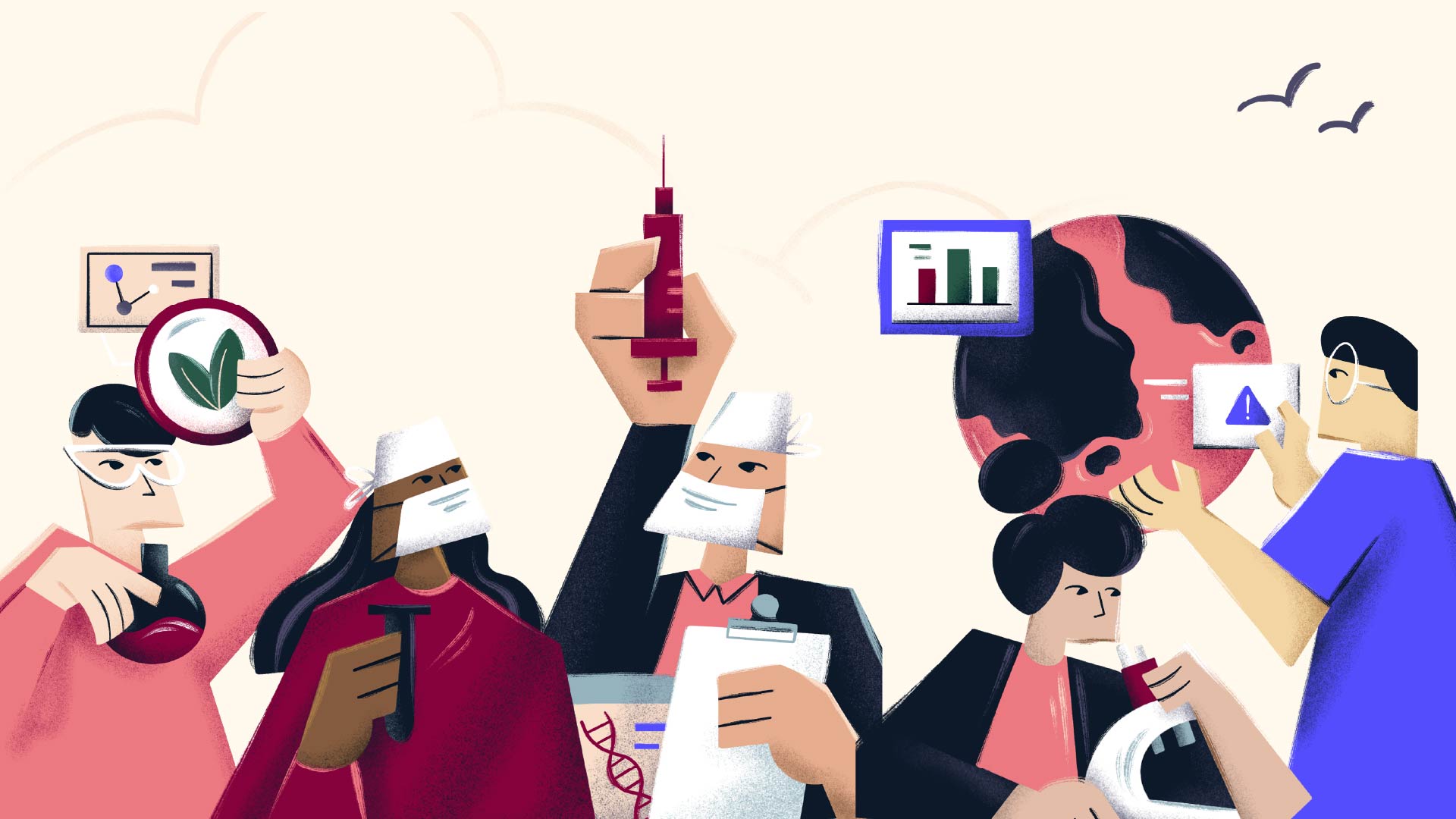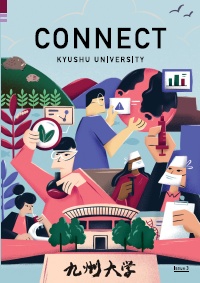
On the cutting edge: Environment and food
Kyushu U scientists are taking steps towards a better, brighter, and more livable future
Our survival on this very planet is under threat. From the climate crisis to the worsening impact of environmental pollutants and the ever-growing threat of food instability, finding solutions to complex existential problems requires close collaboration across nations and academic disciplines.
Kyushu University is tackling these challenges head-on, with researchers from diverse disciplines spanning from agriculture to mathematics. By actively undertaking efforts to understand the current climate and environmental crises, our scientists are taking steps towards a better, brighter, and more livable future.
Ensuring food security amid the climate crisis
As scientists race to find ways to address the climate crisis across all fronts, Yushi Ishibashi is on a mission to ensure the stability of agriculture amidst a warming world. After all, while we humans can find ways to respond to the changing climate, the crops that feed the world cannot—with plants often bearing the brunt of environmental disasters.
“Our crops currently have to contend with unprecedented stressors like higher temperatures, drier weather, and wetter seasons. We want to understand how these stressors affect crops by studying their genetics, morphology, and physiology, in hopes of building a more resilient agricultural system,” explained Ishibashi.
According to him, plants have several protective measures to help them remain resilient against stressors. Currently, his team is studying how such traits are passed on to the next generation through epigenetic mechanisms and reversible yet inheritable changes in gene expression.
While these heritable mechanisms remain under investigation, it’s clear that for Ishibashi’s work to bear fruit—literally—interdisciplinary collaboration will be crucial.
“Considering that food is a cornerstone of culture and society, we must be mindful of how our research will affect it. The good thing is that collaboration is very easy here at Kyushu University,” noted Ishibashi, who added that he had even been approached by engineering colleagues to collaborate on a project studying the effects of low-temperature plasma on seeds.
Mapping the fate of microplastics
It was in 2007 when physical oceanographer Atsuhiko Isobe started tracking microplastics in the oceans around Japan. Proving that great minds think alike, the following years saw an explosion of international research analyzing the effects of microplastics on global ecosystems.
Isobe shared that while exploring marine ecosystems, he and his colleagues would often come across ocean plastic. Seeking to find the source of the trash, he started developing simulations during field monitoring. Still, the team kept encountering smaller and smaller pieces of plastics—otherwise known as microplastics—leading them to develop a map of their distribution.
Even with the map at hand, there are many questions for Isobe to tackle. For instance, how does the ocean environment react to plastic waste? Where do the microplastics eventually end up?
“We’re also working with polymer scientists to investigate exactly how plastics break down and how small they can actually become. Meanwhile, our colleagues in the environmental toxicology lab are helping us examine the biological impact of microplastics,” shared Isobe.
Isobe hopes to fully understand the circulation of microplastics from the land to the ocean and into organisms, and develop evidence-based action plans to address the growing scourge of microplastic waste.
There is no doubt that such an expansive undertaking would require several experts from different fields, such as environmental economics, and even policymakers.
“We are just scratching the surface of this field. Thankfully, Kyushu University has many prominent researchers who are willing to collaborate,” Isobe concluded.
Introducing the insect bioreactor
Entomology is arguably one of the oldest fields at Kyushu University, with research on the silkworm as one of the initial stitches in the tapestry of the university’s rich history.
These insects were cultivated at the university as a genetic resource for academic use back in 1922, and today they produce something significantly valuable: proteins for medicine and pharmaceuticals.
“Artificially making a specific protein usually requires bacteria, yeast, or plants. Generally, this is done by adding DNA into one of these organisms so that they can make the protein within their own cells, which we then purify,” explained Takahiro Kusakabe. “Sometimes, however, certain proteins cannot be cultivated in these organisms.”
This is where silkworms come in. To produce previously unobtainable proteins at a fraction of the cost, Kusakabe is using silkworms as high-efficiency bioreactors. These proteins could then be used in numerous applications, such as components in vaccines.
“Some of the proteins we’ve produced are already being tested in vaccines for livestock,” said Kusakabe. “The silkworms are very efficient. Just one worm can produce 5 mg of norovirus protein, enough to develop a vaccine for 1,000 people!”
In 2018, Kusakabe founded the startup KAIKO, partnering with medical and pharmaceutical companies to ensure the public can benefit from the silkworm bioreactors. Indeed, his research shows that even big breakthroughs can come in tiny sizes.
This article first appeared in issue 3 of Connect, Kyushu University's English-language magazine. View other articles online, download a PDF (4.5 MB) of the full issue, or browse previous issues to learn about more exciting things happening at Kyushu U.
































